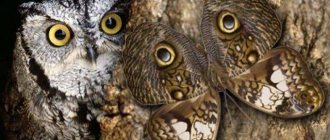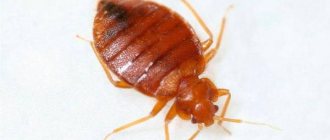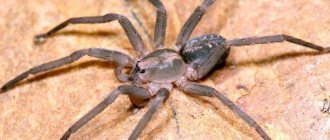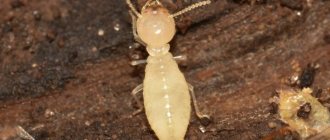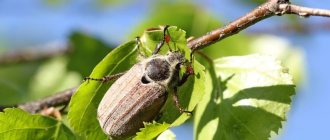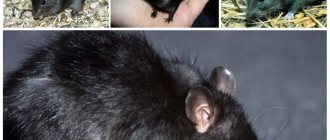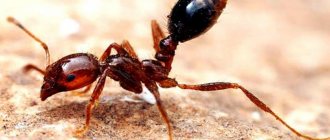Studying the mechanics of fly flight
Flies are of great interest to scientists who believe that they are amazing creatures of nature.
Particular attention is paid to their aerodynamics, speed, and flight is unique. Anyone can be convinced of this if they take a close look at the insect’s flights. The aerodynamics of a fly is manifested in the fact that it flies in a unique way: it either hovers in the air, rushes rapidly forward, then instantly changes course and turns over in the air. This behavior interested American scientists at Cornell University. During their research, they recorded many interesting points:
- In one second, an insect makes hundreds of wing beats. Their movement resembles the movement of rowers' oars. During movement, the wing rotates relative to the longitudinal axis and, when moved back and forth, takes a variety of positions. Flight of a fly
- To carefully examine how a fly flies and the phases of its movements, scientists placed several insects in a backlit box. When the fruit fly hit the center, 3 cameras were turned on, which filmed silhouettes on the walls during the flight. Their speed was 8 thousand frames per second. A rotating object was projected onto the wall. As soon as the fly noticed it, it immediately made a sharp turn. The flight path of a fly is very diverse. During flight, the wings behave the same. When turning, one of them, when moving forward, tilts to the horizontal at an angle of 49 degrees. If the displacement occurs backwards, the angle is slightly less - 40°. The second wing is always in the same position. The body turns due to the angle of inclination, which creates a lot of resistance.
- During a turn, the equilibrium position of the wings shifts relative to each other by 10-15°, so the movement becomes asymmetrical.
Interesting!
To turn 120 degrees in flight at a fairly high speed, the fly makes 18 wing beats in just 80 milliseconds.
Wing Features
Most insects are endowed with two pairs of wings. In contrast, flies have only a front pair, so they, together with mosquitoes, belong to the order Diptera. The absence of a second pair allows them to make more frequent movements of their wings and maneuver during flight. Among the huge number of insects, flies are considered the most dexterous flyers.
They are able to perform lateral and rearward flights, and also excellently stay in the air upside down, which allows them to feel comfortable sitting on the ceiling. To perform such tricks, insects have halteres - club-shaped organs that arise from the hind wings.
Sensitive receptors that permeate the halteres act as stabilizers. Their movements have the same frequency as the wings. An individual whose halteres have been removed is unable to fly. By the way, the sound it makes during flight appears not only from frequent flapping of its wings - it is also the result of vibration of the halteres.
How do houseflies feed?
House flies are practically omnivorous insects. They have no teeth. A long proboscis takes part in the feeding process and performs a certain job. It is a tongue that is divided into two tubes through which the fly sucks in food.
The presence of taste buds on the paws allows you to taste the food first. And only after that the proboscis comes into play. House flies prefer liquid food, since solid food must be moistened with saliva before consumption. After softening with the help of the proboscis, the food ends up in the digestive system of the insect.
Favorite treats of house flies
Flies prefer to feed on various sweet foods in the form of liquids, as well as canned food. These include:
- Fruit and vegetable juices.
- Lemonades and compotes.
- Sweet tea.
- Jams and preserves.
- Honey.
But these pests not only eat up leftover food from people. Their paws contain pathogenic bacteria that, if they enter the human body, can cause various diseases. Therefore, if you find flies in your home, you need to immediately take measures to combat them.
Flight Features
Flies fly in zigzags at a decent speed; they do not have a specific trajectory, but it depends on a number of factors. The direction and speed of flight is largely determined by the needs of the insect: hunger, reproductive instinct. They maneuver if they see obstacles in their path. They don't need acceleration to take off, and they don't have to slow down to land on the surface.
Flight of a fly
The main types of flight include:
- hovering in the air and moving in different directions;
- covering long distances at high speed;
- performing various maneuvers in the air, high flight speed.
If a fly has to fly long distances (up to 2 km), at which it has to change direction, it does not stop. The flight of these insects has not been fully studied. Scientists today do not understand the subtleties of the art of this type of movement.
Interesting!
Flies walk upside down due to the fact that their legs have a sticky pad that allows them to stick to different types of surfaces.
Smoke bomb from flies Mukhoyar
To kill flies in large rooms with high ceilings, the Mukhoyar smoke bomb is suitable. It will be an effective replacement for the less economical and more expensive aerosol.
Smoke bomb from flies Mukhoyar
How to use a smoke bomb against flies?
Place the product indoors and set it on fire. The intense smoke released will fill the room, penetrate into the cracks and destroy all insects. Using a checker it is convenient to treat rooms with both low and high ceilings. The contents of the package (100 g) are enough to destroy: flies in a room with a volume of up to 800 m³, mosquitoes – 1000 m³, wasps – 100-120 m³, fleas, bedbugs, feather eaters and lice eaters – 180 m³.
The Mukhoyar smoke bomb is also used to effectively destroy wasp nests, while spraying an aerosol only embitters their inhabitants.
From flies - “MUKHOYAR”!
Aerodynamics of a fly
Scientists compare the insect and its capabilities to a flying saucer. It can calmly hover in the air, make jerks in different directions without first gaining acceleration, quickly takes off, lands sharply, and holds perfectly on horizontal and vertical surfaces. The most important mystery for scientists that has not yet been solved is how it stays upside down on the ceiling and then calmly turns over during flight.
Interesting!
Having unraveled the mystery of aerodynamics, scientists will be able to create the perfect aircraft, which will become a major military achievement.
The flight path of a fly is difficult to calculate. She quickly changes direction, flies in zigzags, right, left, down, up. A quick, instant reaction is provided by a compound eye that allows you to see around its axis. It breaks into the air even before the person takes a decent swing.
Flight Features:
- Moving in different directions, hovering, maneuverability.
- Upside down location.
- The ability to fly long distances without stopping.
- High flight speed.
Not a single insect can compare with a fly in terms of aerodynamics and speed. The main goal of scientists is to solve the mystery.
Maximum performance for fly flights
The class of insects is unusually diverse. There are many orders, united by similar properties of body structure, individual organs, and method of nutrition.
The fly is classified as a dipteran. The lack of flying organs did not affect the quality or speed of movement.
Fly wingspan
The absence of an “extra” pair of wings allows you to work wonders: make quick flaps and easily maneuver in the air.
High mobility is provided by the halteres formed from the hind wings. When the paired organ is removed, flight will cease and the insect will join the ranks of crawling creatures.
Range
The distances that flies can fly amazes many scientists; they cover up to 3 km per hour without stopping. But in order to fly these distances, important reasons are needed.
Typically, a fly develops high speed indicators if it is very hungry, if it needs to lay eggs, and is prompted to this fast flight by the thirst for mating.
Insects begin to fly quickly in unfavorable weather conditions.
Typically, the activity of flies is observed in the summer; they are often found on the street, but at the end of the summer season they begin to move into people’s homes. They also love to live in outbuildings and sheds with livestock.
Height
Diptera insects are found almost everywhere. Scientists have proven that the flight height of a fly is limited. They, like birds, do not fly high into the sky.
For a comfortable existence, food is practically nearby. It’s not difficult to get food: there are dumps and dung heaps around, you can enjoy delicious jam, bread crumbs, and plant nectar.
Fly eating bread
The food is low, the shelter is nearby. There is no need to strive upward.
Scientists did not specifically conduct experiments trying to establish how high representatives of the group rise. Insects reach 5-10 floors. Residents of high-rise buildings claim that they noticed the pest on the 25-28th floors.
Researchers comment on the unusual phenomenon. They claim that insects do not rise to significant heights on their own. The maximum flight height of a fly depends on the wind.
Flying in the rain
Flight of a mosquito in the rain This small creature never ceases to amaze with its abilities. Scientists have recently studied the flight of a mosquito during rain and the height of its movement.
A raindrop measures 8 mm and weighs up to 100 mg, which is several times the size of an insect.
- Once on its paws, the drop slightly changes its trajectory, throws it to the side, and twists it.
- If a drop falls on the body, it does not change its trajectory, carries the insect down several meters, and does not allow it to rise.
- If a drop gets on the body of an insect when it is on a solid base, death occurs.
The experiment was carried out in a special container where rain was artificially created. They filmed what was happening with a camera, and then analyzed what was happening. During rain, bloodsuckers can fly, but their movements are not clearly coordinated; raindrops do not allow them to rise high; maximum flight is at a height of 1 m above the ground.
The structure of mosquitoes and flies is different, they also differ in size, but they annoy humans in the same way. The latter are able to rise much higher, the wind helps to rise higher, and the flight of a fly has its own characteristics.
Distance and speed
Insects travel long distances easily. The fly's flight speed is about 6.4 km per hour. She has an excellent reaction, as many people have seen from their own example, trying to get rid of annoying pests using a fly swatter or newspaper.
It is capable of flying to a height equal to a 10-story building, which is confirmed by experiments conducted by scientists. Some residents of multi-storey buildings claim to have seen flies on the 28th floor. To some extent, flight altitude depends on weather conditions, including wind.
Interesting!
A housefly can make 1000 swings in one minute. Insects practically do not fly over long distances, since they can easily find food in the immediate vicinity. But in rural areas they are able to fly long distances in search of dung.
Speed achievements
The fly flies for distances of up to 3 km without stopping. To overcome such a distance, you need good reasons. Contributing factors are food, egg laying, mating for procreation, as well as unfavorable climatic conditions. By the end of summer, pests willingly move from the wild into human houses, apartments, and outbuildings.
The fly's flight speed reaches 6.4 km per hour. This ability provides greater survival in nature. Easily hides from enemies, finds favorable conditions for existence, a source of food.
The aircraft is extremely simple - a pair of transparent wings, halteres instead of wing flaps. The absence of a second pair of wings allows them to hover in the air, easily change their trajectory, and develop speed.
Flies that bite: are they dangerous?
Among the flies there are poisonous and biting ones. Of the former, the most popular is the tse tse fly (African fly). Everyone has heard about it, at least in passing. Lives in the hot climate of Africa, settling near swamps and marshy places. It feeds on the blood of cattle, but will not miss the opportunity to bite a person. And if this happens, the victim will become ill with a deadly disease that destroys the central nervous system and immunity.
Tsetse fly
African fly is the common name for the entire genus, which includes 23 species. Everyone is dangerous and nothing good will come from meeting such an enemy. Externally, the tsetse is more similar to a horsefly than a housefly: it also folds its wings on top of each other and has a characteristic stinging proboscis. Living in the wild, it bites small animals, moving closer to humans - livestock and people. The disease carried by the African fly is called "sleeping sickness" and causes paralysis and death.
But this is exotic, let's return to local parasites. Are any of them poisonous? No, but almost everyone carries various infections on their paws. That is why food on which an insect has crawled should not be eaten. At a minimum, you can get a gastrointestinal disorder, and at a maximum, dysentery or tuberculosis.
However, among the ordinary ones there are those that bite. You will be surprised, but it is not the usual housefly that attacks, but its bloodthirsty counterpart - the zhigalka. Externally, the species are no different, except for the structure of the proboscis, but no one will pay attention to this.
This is interesting! Throughout the summer, zhigalki live near livestock. These are blood-sucking flies: they bite cows, sheep, pigs and other domestic animals without touching humans. With the onset of cold weather, biting pests move into apartments and attack people in search of food. That is why it is popularly believed that by autumn flies “get wild”, become angry before they die and begin to bite.
Fly fly
The zhigalka is one of the most unpleasant species, because along with the bites it can introduce an infection, causing sepsis to develop. She is also a carrier of anthrax. And if the definition “poisonous” does not suit her, then “dangerous” certainly does.
Wohlfart fly
Another unpleasant representative of the fly tribe is the Wohlfarth fly, which is the causative agent of myiasis in livestock and humans: it lays larvae directly on the skin, after which they penetrate inside the body and cause extensive inflammatory foci. The Wohlfarth fly mainly attacks sheep and goats.
Deer bloodsucker
Wild animals also suffer from parasites. For example, deer fly (deer louse, elk tick, deer bloodsucker). It feeds on the blood of large animals, living permanently on their bodies. The deer bloodsucker has nothing in common with the tick; it simply becomes similar to it when, settling on the host, it sheds its wings. It flies poorly, reluctantly, prefers to live in fur, feeding on blood. Despite the obvious name, the deer bloodsucker attacks foxes, wild boars, birds and even humans.
Until now, getting acquainted with the world of flies, we have seen only the negative. Is there anything positive about these insects? Let's answer this question too.

